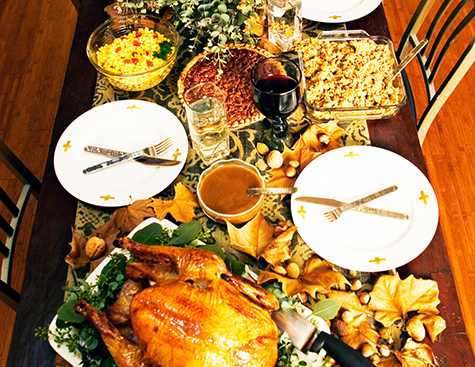Stay Safe While Preparing the Holiday Meals

The holiday season will be here before we know it, which means preparing for yummy feasting, the gathering of friends and family and shopping for all the food. Turkeys, hams, homemade salads and fruity desserts are all waiting to be whipped up and consumed.
But along with popularity of preparing holiday food at home comes the threat of food illnesses. According to the Centers for Disease Control and Prevention, more than 200 known diseases are transmitted through food, and foodborne diseases are estimated to cause up to 9,000 deaths each year in the United States.
"Food safety is everyone's responsibility, particularly when preparing and serving holiday delectables," says Dr. Roger Clemens, a spokesman for the Institute of Food Technologists (IFT), a nonprofit scientific society comprised of food scientists. "Practicing safe food-handling habits during the holidays and everyday ensures a healthier celebration."
To prevent foodborne diseases from ruining your Thanksgiving or Christmas holidays, keep in mind the following tips from the IFT:
- When purchasing your holiday meal at the store, pick up your frozen turkey or ham last before checking out and driving home. As soon as you get home, refrigerate the meat on the lowest level of your cooler or immediately put it in the freezer.
- To thaw, don’t leave a frozen turkey on the counter, which leads to higher bacterial growth. Instead, place the covered turkey in a shallow pan on the lowest shelf of the refrigerator, or if time is limited, place the plastic-wrapped turkey in a pan of cold water. Change the water every 30 minutes until the bird thaws.
- Never place the meat directly on the counter to avoid cross contamination. Clean and sanitize the counter, cutting boards and your hands while handling raw foods. Keep clean dishes and utensils on hand and do not reuse plates that were used for raw meats.
- Use a separate thermometer to check the meat temperature, versus the pop-up thermometer included with the product. Thermometers are inexpensive and easy to use. When the temperature reaches a minimum of 165 F, the turkey should be done – or 145 F for beef veal and lamb, or 160 F for pork and ground meat. Make sure you sanitize and clean the end of the thermometer between uses.
- Before serving, keep hot foods in the oven (set at 200 to 250 F) or cold foods in the refrigerator until serving time to keep them at a safe temperature for a longer period of time.
- Refrigerate leftovers immediately after the meal is finished. Any food sitting out at room temperature for more than two hours should be discarded. Separate leftovers into smaller containers, which allow the food to cool down more quickly and lessen the chance for bacteria to multiply.
"These simple food safety steps, clean-separate-cook-chill, will assure that you and your guests have an enjoyable and memorable holiday," Clemens says.
IFTNEXT

Episode 29: All About Food Safety Culture
In this podcast, we discuss food safety culture, including how food safety culture is established, measured, and how they are expected to change in light of ongoing advancements in food science and policy. Our guests include Hugo Gutierrez, Global Food Safety and Quality Officer for Kerry, and Bob Gravani, Professor Emeritus of Food Science and Director Emeritus of the National Good Agricultural Practices (GAPs) Program at Cornell University.
Episode 20: Trends and Consumer Behaviors in the time of COVID-19: Food Service
The COVID-19 pandemic continues to pull the global food system into new and uncertain territory. Much of this uncertainty stems from rapid shifts in consumer behaviors as a result of our collective 'new normal'.
